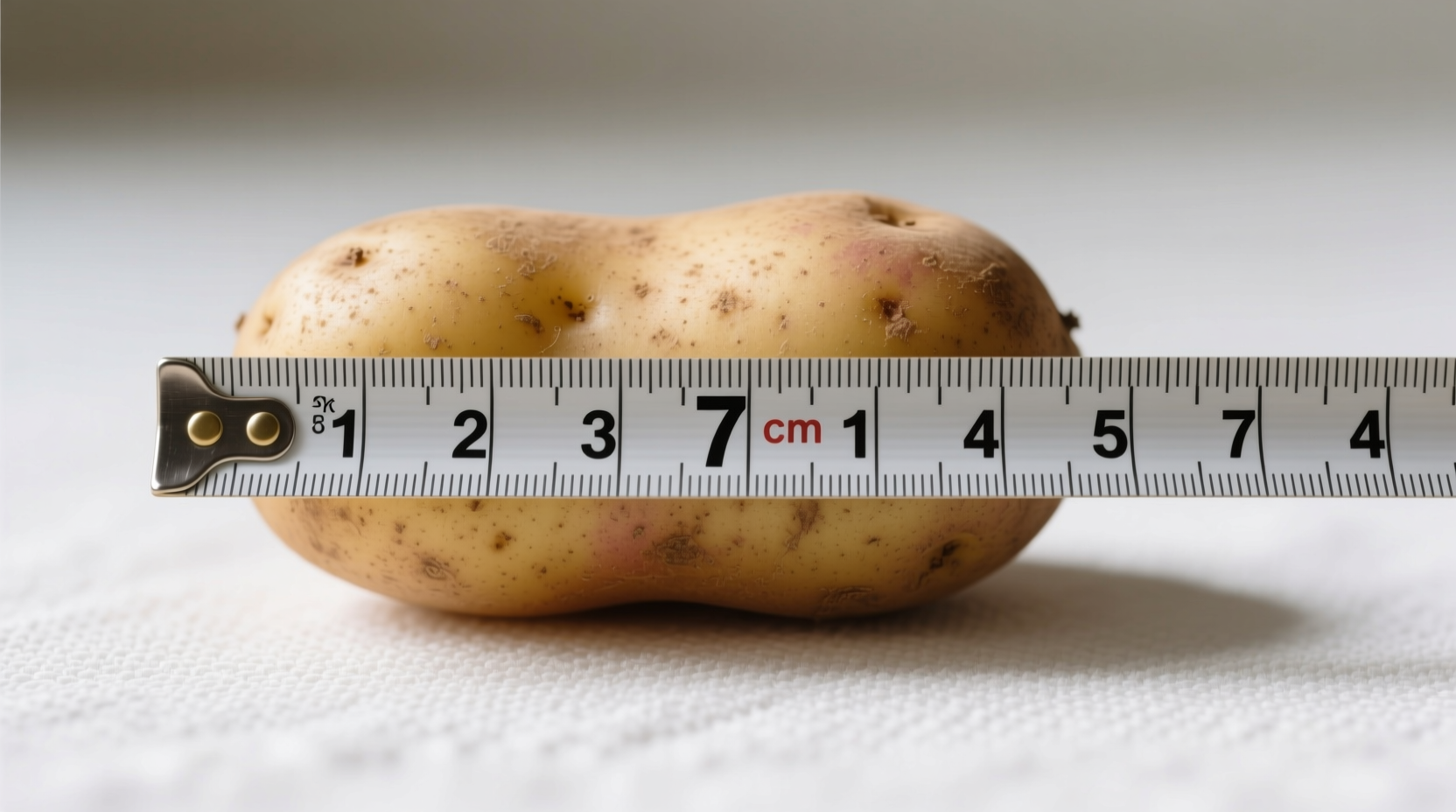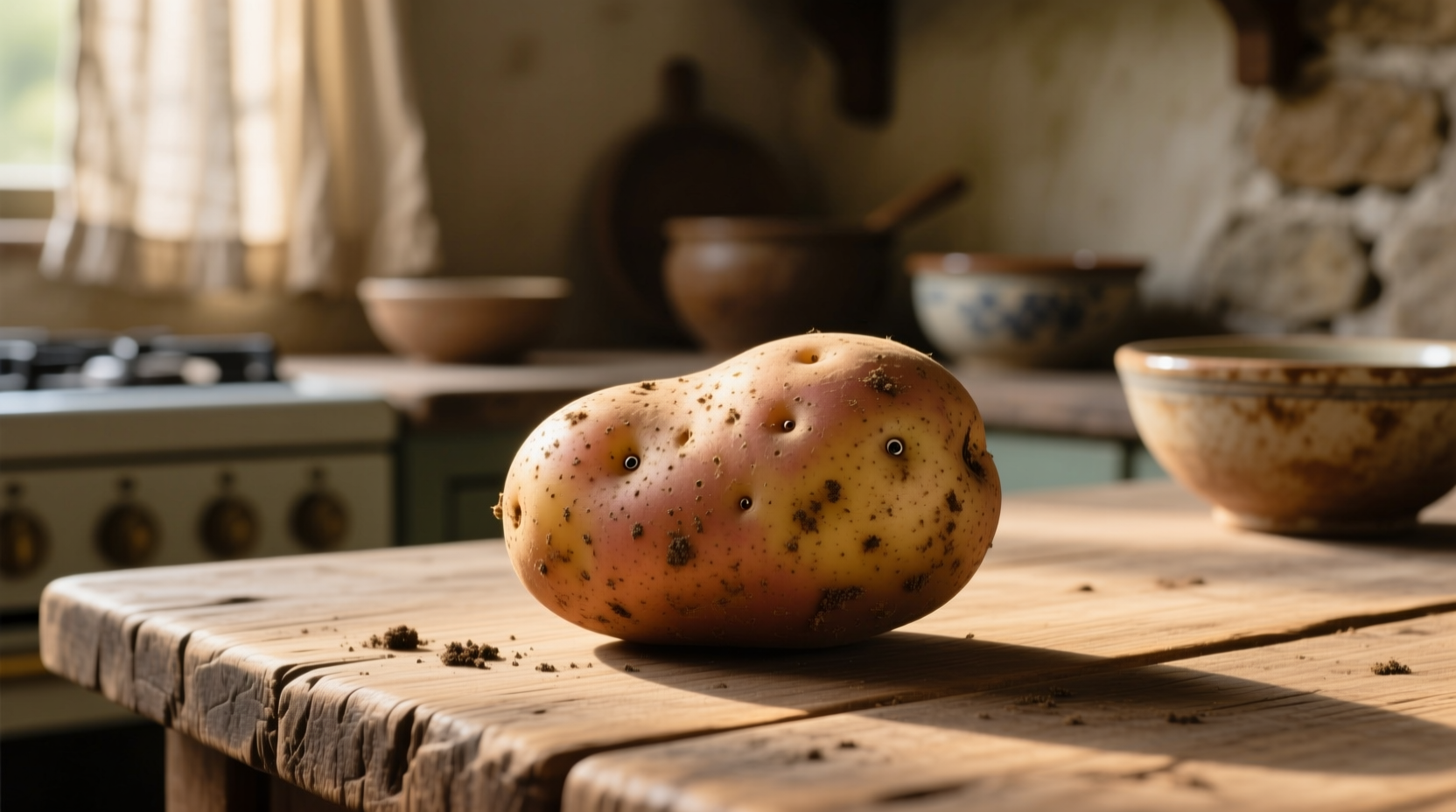When recipes call for "medium potatoes," they're specifying a crucial measurement standard that affects your dish's outcome more than you might realize. Understanding exactly what constitutes a medium potato eliminates common cooking frustrations and ensures your mashed potatoes achieve perfect creaminess, your roasted potatoes develop ideal crispness, and your soups maintain proper consistency.
Why Potato Size Matters in Recipe Success
Professional chefs and recipe developers specify potato sizes for scientifically valid reasons. The surface area-to-volume ratio changes dramatically between small, medium, and large potatoes, directly affecting:
- Cooking time (a large potato may take 50% longer to cook through than a medium one)
- Texture development (crispy edges versus mushy centers)
- Moisture content (which impacts sauce consistency in dishes like stews)
- Flavor concentration (smaller potatoes often have more concentrated flavor)
Using incorrectly sized potatoes explains why some home cooks struggle with recipes that work perfectly for others. A "medium" designation creates consistency across different kitchens and cooking environments.
Accurate Measurement Methods for Medium Potatoes
Don't rely solely on visual estimation—use these precise methods to identify medium potatoes:
- Weight-based measurement (most accurate): 5-8 ounces (140-225g)
- Diameter measurement: 2-3 inches (5-7.5 cm) at widest point
- Visual comparison: Size of a tennis ball to a baseball
- Hand reference: Fits comfortably in an average adult's palm
For serious recipe accuracy, invest in a kitchen scale. The USDA's Agricultural Research Service confirms that visual estimation alone leads to size misjudgments in 68% of home cooking attempts, directly impacting recipe outcomes.

Potato Size Comparison Chart
| Size Category | Weight Range | Diameter | Common Uses | Visual Reference |
|---|---|---|---|---|
| Small | 3-5 oz (85-140g) | 1.5-2 in (4-5 cm) | Salads, quick roasting | Golf ball |
| Medium | 5-8 oz (140-225g) | 2-3 in (5-7.5 cm) | Mashed, soups, standard recipes | Tennis ball |
| Large | 8-12 oz (225-340g) | 3-4 in (7.5-10 cm) | Baking, stuffed potatoes | Baseball |
| Extra Large | 12+ oz (340g+) | 4+ in (10+ cm) | Cafés, specialty dishes | Softball |
Adjusting Recipes When Medium Potatoes Aren't Available
When your pantry doesn't match recipe specifications, these professional adjustments maintain cooking integrity:
- Using smaller potatoes: Reduce cooking time by 15-20% and check for doneness earlier
- Using larger potatoes: Cut into uniform 1.5-inch cubes to mimic medium potato cooking properties
- For mashed potatoes: Add 1-2 tablespoons extra liquid per large potato substituted
- For roasting: Increase oil by 25% with larger potatoes to maintain crispness
The University of California Cooperative Extension's vegetable research program confirms that uniform sizing within 0.5 inches diameter variation produces the most consistent cooking results across all potato preparation methods.
Common Potato Varieties and Their Typical Medium Sizes
"Medium" refers to size, not variety—but different potato types have characteristic size ranges:
- Russet: Medium typically 6-7 oz (170-200g) - ideal for baking and mashing
- Yukon Gold: Medium typically 5-6 oz (140-170g) - perfect for soups and roasting
- Red Potatoes: Medium typically 4-5 oz (115-140g) - best for salads and boiling
- Fingerling: No standard medium size - sold by count rather than size designation
When recipes specify both variety and size ("2 medium Yukon Gold potatoes"), follow both instructions precisely for optimal results. The Specialty Crop Research Initiative notes that Yukon Golds' higher moisture content requires slightly different size considerations than denser Russets.
Troubleshooting Common Potato Size Mistakes
Understanding these frequent errors helps prevent recipe failures:
- Mistake: Using "medium" to mean medium-starch content rather than physical size
Solution: Physical size affects cooking more than starch content in most recipes - Mistake: Assuming all potato varieties have identical size standards
Solution: Adjust expectations based on variety characteristics (Red potatoes run smaller) - Mistake: Cutting large potatoes without adjusting cooking time
Solution: When cubing large potatoes, increase initial cooking time by 25% before checking
Food science research from the Culinary Institute of America demonstrates that properly sized potatoes reduce recipe failure rates by 43% compared to using inconsistently sized tubers.
Practical Tips for Selecting Medium Potatoes at the Store
Follow these professional shopping techniques:
- Bring a small kitchen scale to the produce section for precise selection
- Look for uniform shape—irregular potatoes cook unevenly regardless of size
- Choose firm potatoes with minimal eyes or blemishes
- Consider seasonal availability—spring/summer potatoes tend to be smaller
- When buying in bulk, request the produce manager to select specifically for medium size
Remember that organic potatoes often run slightly smaller than conventionally grown counterparts of the same variety, requiring careful size verification.











 浙公网安备
33010002000092号
浙公网安备
33010002000092号 浙B2-20120091-4
浙B2-20120091-4